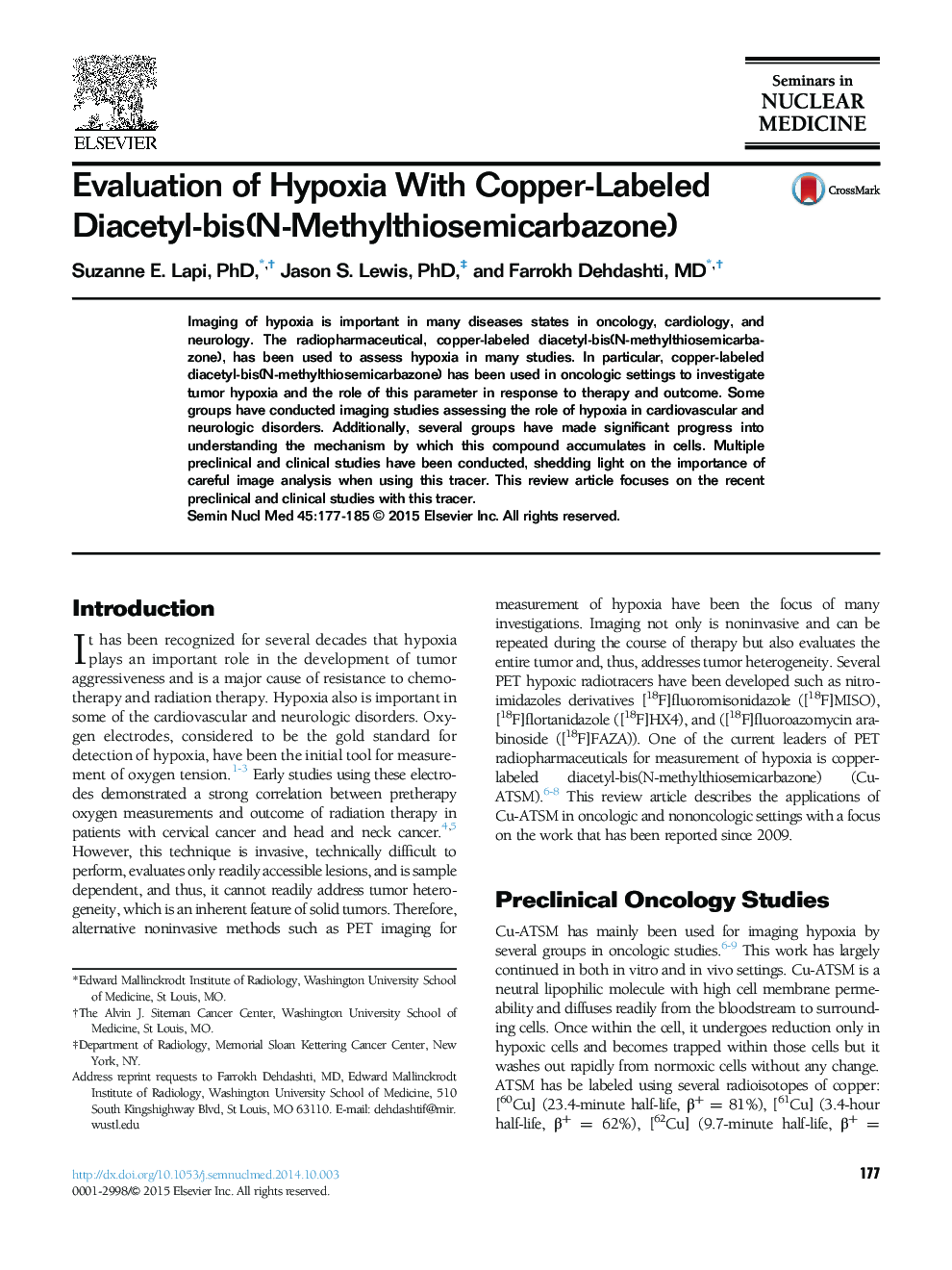| Article ID | Journal | Published Year | Pages | File Type |
|---|---|---|---|---|
| 4250904 | Seminars in Nuclear Medicine | 2015 | 9 Pages |
Imaging of hypoxia is important in many diseases states in oncology, cardiology, and neurology. The radiopharmaceutical, copper-labeled diacetyl-bis(N-methylthiosemicarbazone), has been used to assess hypoxia in many studies. In particular, copper-labeled diacetyl-bis(N-methylthiosemicarbazone) has been used in oncologic settings to investigate tumor hypoxia and the role of this parameter in response to therapy and outcome. Some groups have conducted imaging studies assessing the role of hypoxia in cardiovascular and neurologic disorders. Additionally, several groups have made significant progress into understanding the mechanism by which this compound accumulates in cells. Multiple preclinical and clinical studies have been conducted, shedding light on the importance of careful image analysis when using this tracer. This review article focuses on the recent preclinical and clinical studies with this tracer.
